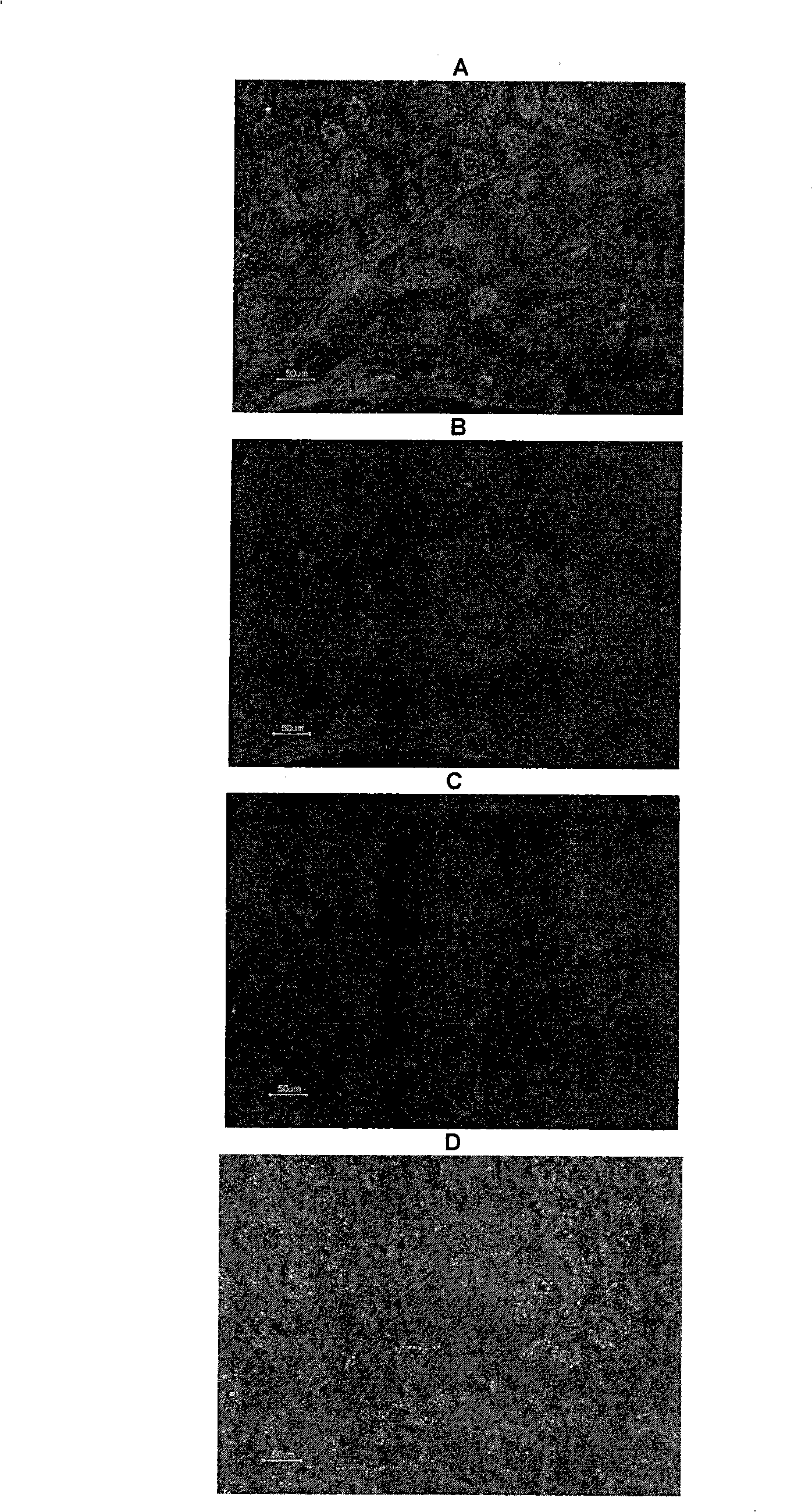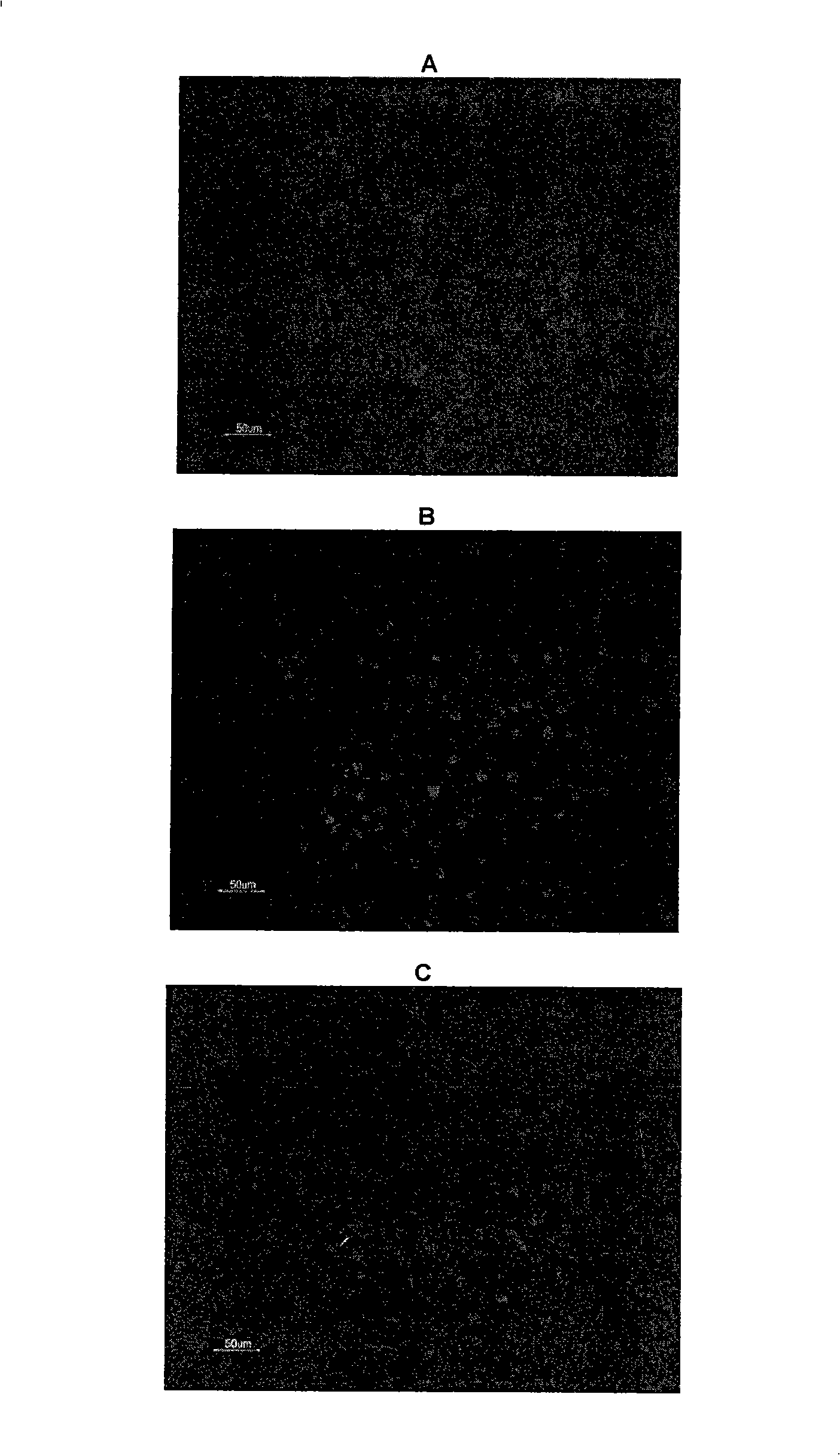Novel hepatocyte-like cells and hepatoblast-like cells derived from hbs cells
A cell, cell population technology, applied in animal cells, vertebrate cells, artificial cell constructs, etc., can solve problems such as uninstructed CYPs
- Summary
- Abstract
- Description
- Claims
- Application Information
AI Technical Summary
Problems solved by technology
Method used
Image
Examples
Embodiment 1
[0329] raw material
[0330] The starting material for use in the present invention is suitably multipotent undifferentiated hBS cells, eg undifferentiated hBS cell lines. Such materials are available from Cellartis AB and are also available through the NIH Stem Cell Registry http: / / stemcells.nih.gov / research / registry / . Cellartis AB has 2 hBS cell lines (SA001 and SA002) and a subclone of SA002 (SA002.5) available through the NIH. In addition, 20 Cellartis cell lines are listed in the UK Stem Cell Bank. These hBS cell lines and additional SA167 and SA348 from Cellartis AB have been frequently used in the present invention. hBS cells recommended as starting material are characterized by the following: positive for alkaline phosphatase, SSEA-3, SSEA-4, TRA 1-60, TRA 1-81, Oct-4, SSEA-1, telomerase Activity and pluripotency in vitro and in vivo (the latter shown by telomere formation in immunodeficient mice) were negative (see figure 1 ) (method and protocol as previously sh...
Embodiment 2
[0335] Protocol for obtaining hepatocyte-like cells
[0336] Intrinsic factor protocol (induced by exposure to intrinsic factor secreted into the medium) Differentiation
[0337] a) hBS cells grown in mEF cell layer in IVF dishes (Falcon) were subjected to 37°C, 5% CO 2 and 95% humidity for up to 40 days to obtain hepatocyte-like cells. Media used (VitroHES with added 4 ng / ml human recombinant bFGF [Invitrogen] TM [Vitrolife AB]) is replaced every 7-21 days, usually every 14 days by discarding about 1-2 ml of old medium and adding 1-2 ml of fresh medium. After 18-30 days, use a sharp microcapillary or Stem Cell ToolTM (Vitrolife AB) as a cutting and transfer tool to isolate hepatocyte-like cells from culture, and subsequently pool the cells for long-term storage (freezing) or use immediately, or alternatively directly fix and stain in culture dishes or use as live cells. Cells are used, for example, in Cyp activity assays. mEFs appear to provide an important signal to supp...
Embodiment 3
[0351] Characterization with liver markers (see figure 2 , 3 and 4)
[0352] Hepatocyte-like cells exhibit the general morphology of hepatocytes, ie they have a polygonal cell shape, large cell diameter (approximately 25-50 [mu]M), are often binucleated and tend to accumulate lipid particles. Furthermore, they express several markers described for hepatocyte types, such as albumin, α1-antitrypsin, LFABP, CK18 and HNF3β. They no longer express the stem cell marker for undifferentiated cells, Oct-4. Certain presumably less mature hepatocyte-like cells still express the fetal liver marker AFP. These cells were preferentially found within colonies of differentiated hBS cells. DAPI (4',6'-diamidino-2-phenylindole hydrochloride, Sigma Aldrich) was used as a control to visualize nuclei. (About Matrigel TM CK18 expression in differentiated hepatocyte-like cells, see Figure 22 . )
[0353] For identification of proliferating hepatoblast-like progenitor cells, AFP, HNF4, CK19...
PUM
| Property | Measurement | Unit |
|---|---|---|
| diameter | aaaaa | aaaaa |
| diameter | aaaaa | aaaaa |
Abstract
Description
Claims
Application Information
 Login to View More
Login to View More - R&D
- Intellectual Property
- Life Sciences
- Materials
- Tech Scout
- Unparalleled Data Quality
- Higher Quality Content
- 60% Fewer Hallucinations
Browse by: Latest US Patents, China's latest patents, Technical Efficacy Thesaurus, Application Domain, Technology Topic, Popular Technical Reports.
© 2025 PatSnap. All rights reserved.Legal|Privacy policy|Modern Slavery Act Transparency Statement|Sitemap|About US| Contact US: help@patsnap.com



